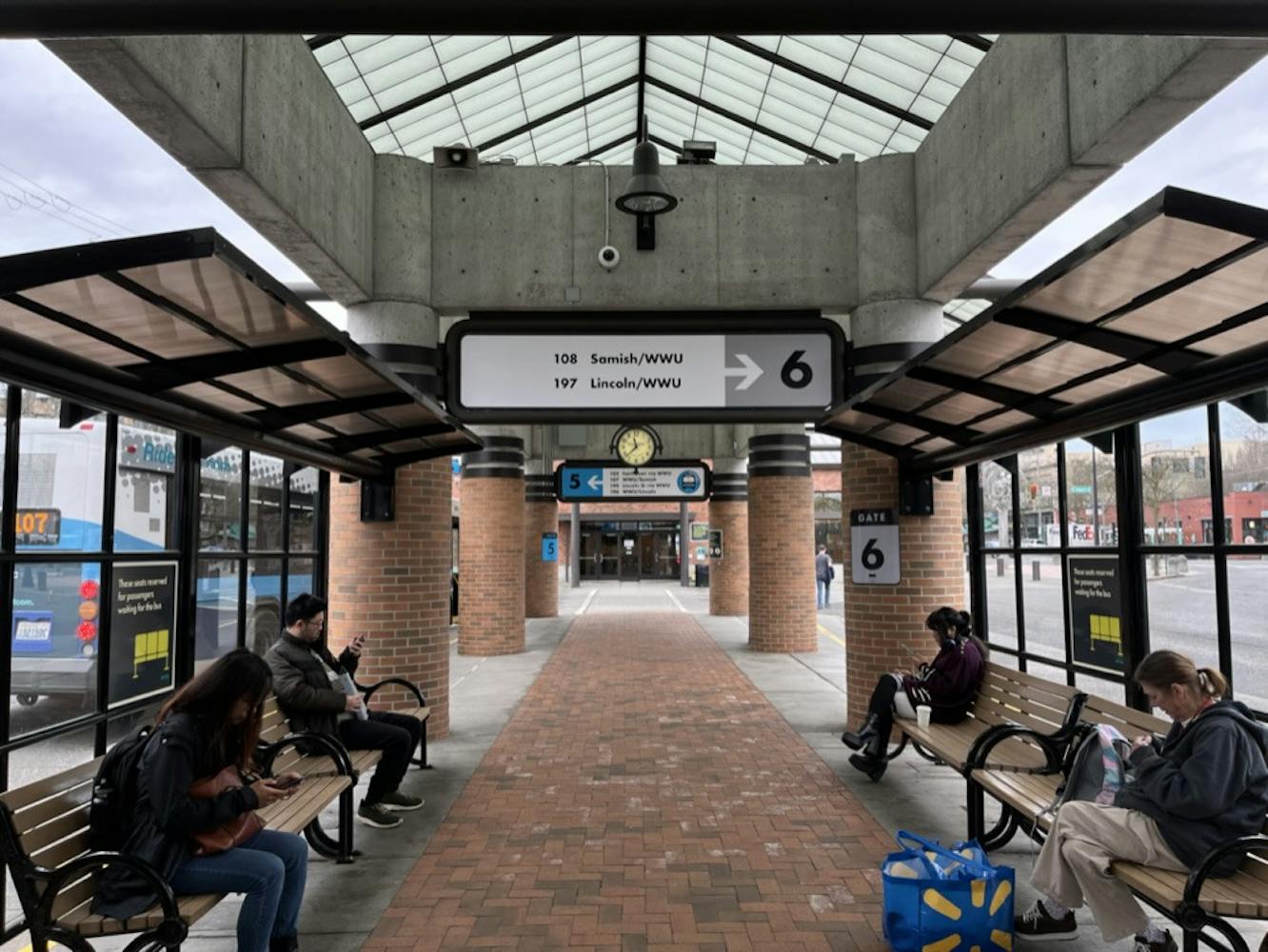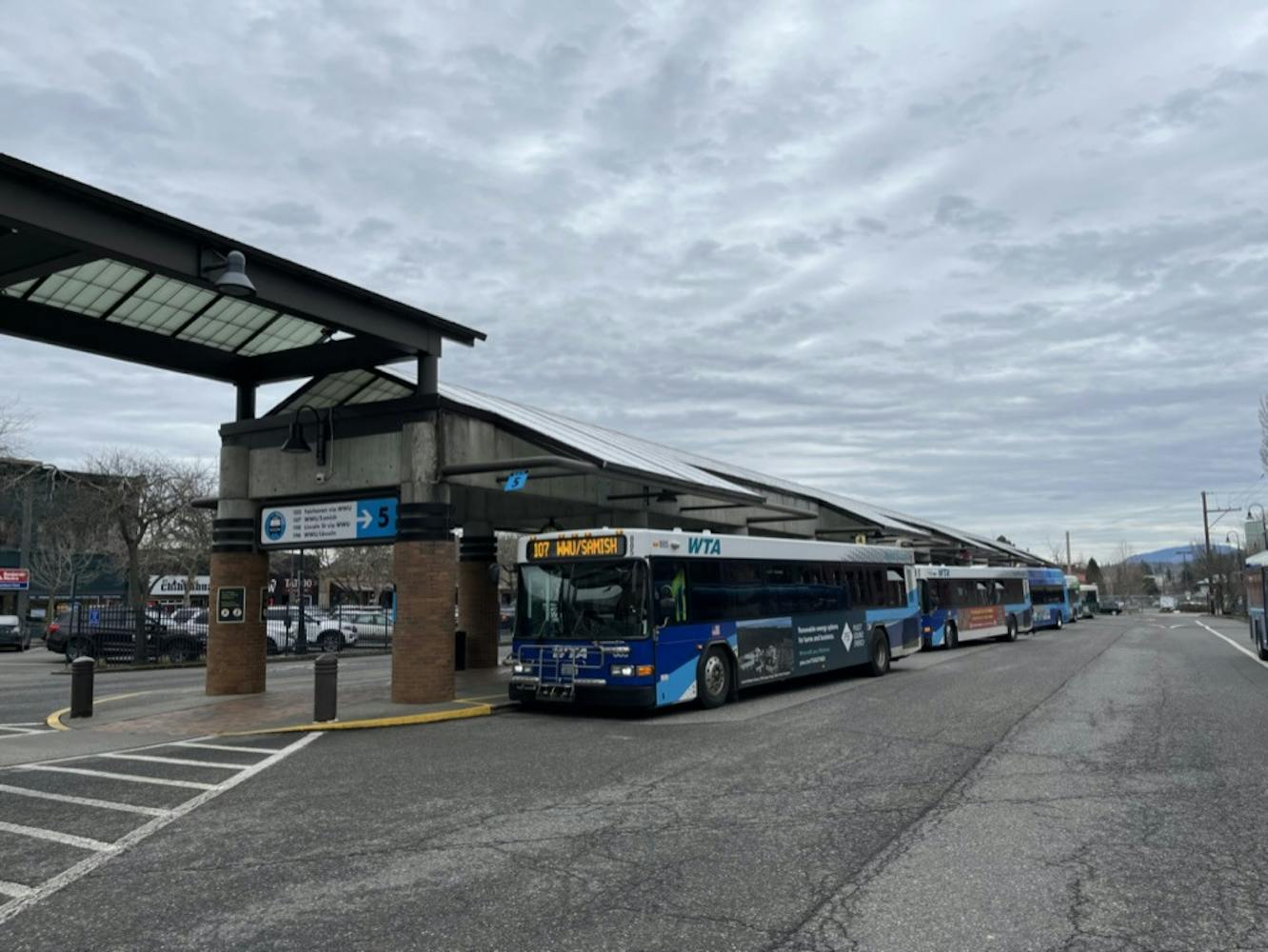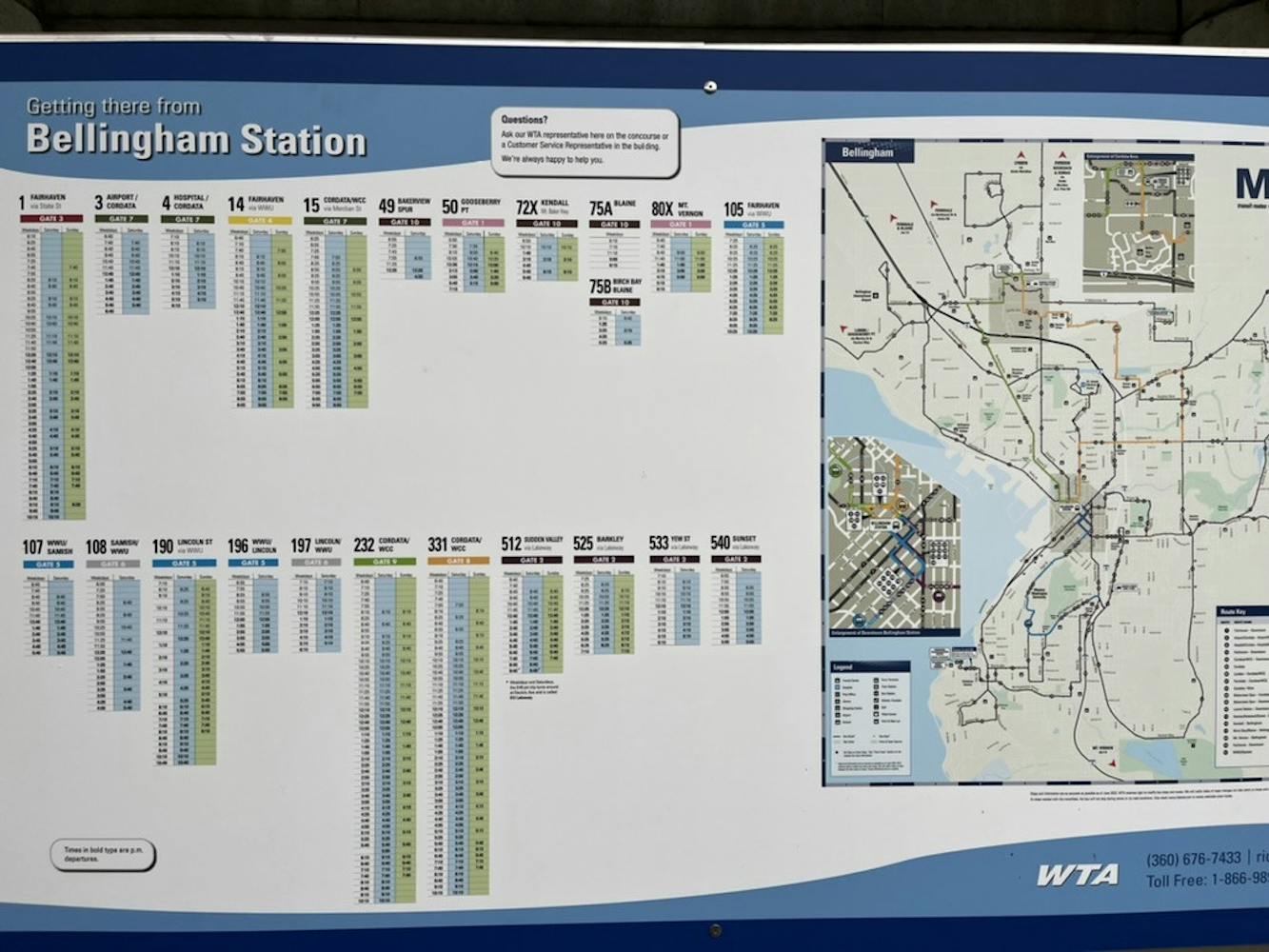The Bellingham Station Expansion plan provides a vision for reimagining the space around the downtown transit station, with the primary goal of adding service to the community.
After conducting what was deemed the “visioning study” in 2023, the Whatcom Transportation Authority is using the remainder of 2024 to determine the feasibility of expanded public transportation services.
After learning that they will receive $5 million in state funding, WTA staff is making it their mission to assess the needs of not only the downtown community but also frequent transit riders in Bellingham.
“If we’re having to break ground anyways and do construction, what else might we be able to do that could benefit the community?” said Mary Anderson, a senior transit planner for WTA.
Anderson identified housing to be a main concern brought up by the public when asked what other services would be beneficial.
“WTA is open to looking at uses and services beyond just transit,” said City of Bellingham Senior Planner Darby Galligan. “People were really excited about the possibility of having some housing incorporated.”
Community gathering spaces were also brought up during the visioning study, as well as a possible “resource hub” where nonprofit organizations would have an opportunity to provide resources to transit riders at the station.
Many Western Washington University students are frequent transit riders, bringing about unique concerns. Traveling to and from school is a primary motivation for students riding the bus, with some relying on it as their only mode of transportation.
“I hope they do consider adding more times to marginalized routes that they have,” said Miguel Garduño, a Western student and daily transit rider. Garduño lives in the Sudden Valley neighborhood and experiences a limited range of pickup times on the 512 route.
Garduño isn’t the only Western student with frustrations about the bus system. First-year Rhen Saul thinks adding more buses to heavier routes that students take would be an improvement. “It’s easy to a point,” Saul said of their transit experience in Bellingham. “Most of the buses aren’t generally timely.”
WTA is looking to solve these issues as part of their plans. Anderson said expanding the station’s site will allow WTA to add more routes and buses. Currently, the station is at capacity during the “peak hours” of the week.
“[We have] a tiny bit of room for expansion,” Anderson said.
The Washington State Department of Transportation is committed to providing people with access within their communities, said Public Transportation Director Brian Lagerberg. Lagerberg described a process in which WSDOT helps communities meet their public transportation needs at a local level by identifying gaps in service and providing grants to fund the expansion of services.
“For me, it’s about access to community and it’s about, in a lot of situations, addressing vulnerable populations,” Lagerberg said.
Les Reardanz, general manager at WTA, said the organization is looking at technologies that can help make transit run more frequently and efficiently, mentioning a “systems approach” to expansion. This would include identifying where riders are most frequently getting on and off the bus, and adjusting routes based on that data.
“In general, what you try to do is allocate your resources to hit the most needs,” he said.
Reardanz highlighted the city of Bellingham’s involvement in the process, emphasizing the importance of working with them to ensure that WTA’s project matches the city’s vision for the downtown area.
State funding for the project won’t be available for another few years, with construction beginning in 2027 or 2028. The main objective this year is finding out how to implement the community’s “big ideas,” Anderson said.
From now until construction can begin, WTA will be doing their “due diligence,” said Reardanz and Anderson. This will include identifying different sites around the downtown station that serve as opportunities for expansion, and ensuring that these expansion opportunities will adhere to environmental regulations.
Franny Vollert (she/her) is a city news reporter for The Front this quarter. She is a sophomore majoring in journalism with a news/editorial concentration. She enjoys reading, taking walks, and spending time with friends. You can reach her at frannyvollert.thefront@gmail.com.








